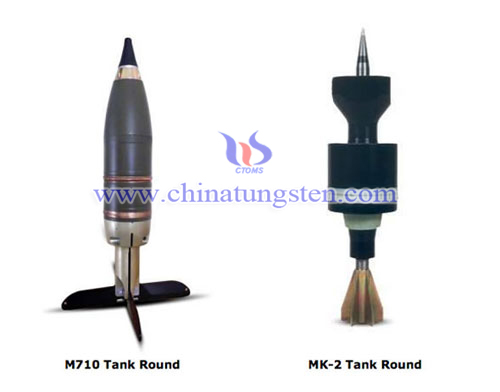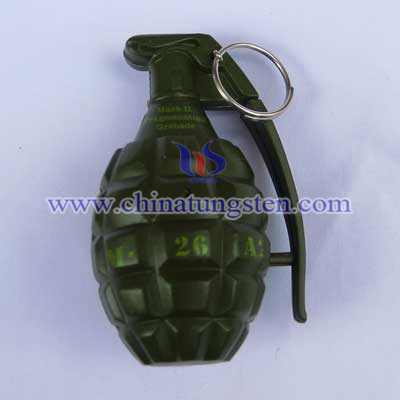Tungsten Shielding Helps at Fukushima Daiichi
- Details
- Category: Tungsten Information
- Published on Friday, 23 August 2013 17:52
- Hits: 1919
Technology implemented at over 40 percent of the operating nuclear power plants in the United States is now being used to help in the efforts to contain the stricken reactors at the Fukushima Daiichi nuclear power plant in Japan.
Tungsten shielding, first developed in 2006 with a partnership between Entergy Nuclear and American Ceramics Technology, has been used by Entergy employees since 2008 for protection from radiation while performing maintenance during refueling outages. The shielding is a flexible heat-resistant material made of tungsten and iron metal powder immersed in a silicone polymer.
Traditionally, lead has been the product of choice for radiation shielding. Tungsten shielding has the ability to field-fit, providing for attenuation of radiation totaling from 5 to 10 person-Rem/year than provided by the equivalent weight of traditional lead blanket. And since tungsten is thinner and weighs as much as 50 percent less than lead, it may be more forgiving when workers are performing the physical activities required in a nuclear power plant.
"It gives them better protection at a lighter weight and better mobility," said Dick Culbertson, CEO of American Ceramics Technology.
Vests made of tungsten worn by employees working in areas where there is exposure to radiation were successful when first used, but did have limitations. The vests had the ability to protect only the front of the body, so the source of radiation had to be directly in front of the worker. Then, American Ceramics Technology received a request from the 810 MW Cooper Nuclear station, which Entergy provides support services to, for a vest that covered the entire body, front and back. Workers at Cooper were entering areas of the plant that had a high dose field coming from all directions.
Tungsten Manufacturer & Supplier: Chinatungsten Online - http://www.chinatungsten.com
Tel.: 86 592 5129696; Fax: 86 592 5129797
Email: sales@chinatungsten.com
Tungsten Picture Center: http://picture.chinatungsten.com
Tungsten Video Center: http://v.chinatungsten.com
Tungsten News & Tungsten Prices, 3G Version: http://3g.chinatungsten.com
Advantages of Tungsten Alloy Radiation Shielding
- Details
- Category: Tungsten Information
- Published on Tuesday, 20 August 2013 18:20
- Hits: 1860
Experts find that radiation exposure could be reduced by maxing shielding. The density of a material is related to its radiation stopping ability. Higher density means better stopping power and shielding. Due to a higher density, tungsten alloy radiation shielding has a much higher stopping power than lead. Its greater linear attenuation of gamma radiations means that less is required for equal shielding. Alternatively equal amounts of tungsten alloy radiation shielding provide diminished exposure risks than equivalent lead shielding.
Tungsten alloy radiation shielding is a suitable raw material for radiation protection, as its combination of radiographic density (more than 60% denser than lead), machinability, good corrosion resistance, high radiation absorption (superior to lead), simplified life cycle and high strength. It can provide the same degree of protection as lead whilst significantly reducing the overall volume and thickness of shields and containers. Besides, compared with lead or depleted uranium in the past, tungsten alloy radiation shielding is more acceptable in this case, for they are non-toxic.
Tungsten Manufacturer & Supplier: Chinatungsten Online - http://www.chinatungsten.com
Tel.: 86 592 5129696; Fax: 86 592 5129797
Email: sales@chinatungsten.com
Tungsten Picture Center: http://picture.chinatungsten.com
Tungsten Video Center: http://v.chinatungsten.com
Tungsten News & Tungsten Prices, 3G Version: http://3g.chinatungsten.com
Tungsten Kinetic Energy Penetrator
- Details
- Category: Tungsten Information
- Published on Thursday, 08 August 2013 16:27
- Hits: 2323

Tungsten kinetic energy penetrator (also known as a KE weapon) is a type of ammunition that, like a bullet, does not contain explosives and uses kinetic energy to penetrate the target.
The opposite technique to tungsten kinetic energy penetrator uses chemical energy penetrators. There are two types of these shells in use: high explosive anti-tank (HEAT) and high explosive squash head (HESH). They have been widely used against armor in the past and still have a role but are less effective against modern composite armor such as Chobham as used on main battle tanks today.
The principle of the tungsten kinetic energy penetrator is that it uses its kinetic energy, which is a function of mass and velocity, to force its way through armor. The modern KE weapon maximizes KE and minimizes the area over which it is delivered by:
being fired with a very high muzzle velocity
concentrating the force in a small impact area while still retaining a relatively large mass
maximizing the mass of whatever (albeit small) volume is occupied by the projectile—that is, using the densest metals practical, which is one of the reasons depleted uranium is often used.
Tungsten kinetic energy penetrator has led to the current designs that resemble a long metal arrow.

Tungsten Manufacturer & Supplier: Chinatungsten Online - http://www.chinatungsten.com
Tel.: 86 592 5129696; Fax: 86 592 5129797
Email: sales@chinatungsten.com
Tungsten Picture Center: http://picture.chinatungsten.com
Tungsten Video Center: http://v.chinatungsten.com
Tungsten News & Tungsten Prices, 3G Version: http://3g.chinatungsten.com
Tungsten Alloy Prefabricated Fragments
- Details
- Category: Tungsten Information
- Published on Friday, 09 August 2013 15:54
- Hits: 2026

Fragmentation warhead is one of the main types of warheads, mainly by the role of high-energy explosives, the formation of a large number of high-speed fragments, using high-speed hitting the tungsten alloy prefabricated fragments, the role of ignition and detonation damage targets, and can be used for anti-effectives (human, animal), no armor or light armored vehicles, aircraft, radar and missiles and other weapons and equipment. According to the generation of fragments channels, fragmentation warhead can be divided into natural, pre-control and pre-fragmented warhead three types.
tungsten alloy prefabricated fragments are natural under detonation. Tungsten alloy ball, the shell expansion, fracture broken of such warheads is characterized not only as a container shell to form another anti-elements, fragments the size of the uneven, irregular shape in the air fast decay in flight speed, so that the effective anti-personnel grenade is limited in scope. Usually, tungsten alloy prefabricated fragments made from tungsten alloy ball. We can provide different sizes of tungsten alloy balls in accordance with your requirements.

Tungsten Manufacturer & Supplier: Chinatungsten Online - http://www.chinatungsten.com
Tel.: 86 592 5129696; Fax: 86 592 5129797
Email: sales@chinatungsten.com
Tungsten Picture Center: http://picture.chinatungsten.com
Tungsten Video Center: http://v.chinatungsten.com
Tungsten News & Tungsten Prices, 3G Version: http://3g.chinatungsten.com
Tungsten Armor Piercing Shells in World War I
- Details
- Category: Tungsten Information
- Published on Wednesday, 07 August 2013 15:22
- Hits: 2323

Tungsten armor piercing shells for tank guns, although used by most forces of this period, were not used by the British. The only British APHE projectile was the AP, Mk1 for the 2 pdr anti-tank gun and this was dropped as the product was found that the fuse tended to separate from the body during penetration. Even when the fuse didn't separate and the system functioned correctly, damage to the interior was little different from the solid shot, and so did not warrant the additional time and cost of producing a shell version. APHE projectiles of this period used a bursting charge of about 1-3% of the weight of the complete projectile, the filling detonated by a rear mounted delay fuse. The explosive used in APHE projectiles needs to be highly insensitive to shock to prevent premature detonation. The US forces normally used the Explosive D, otherwise known as ammonium pirate, for this purpose. Other combatant forces of the period used various explosives, suitability desensitized (usually by the use of waxes mixed with the explosive).
Tungsten armor piercing shells were used prior to and during World War I were generally cast from special chromium (stainless) steel that was melted in pots. They were forged into shape afterward and then thoroughly annealed, the core bored at the rear and the exterior turned up in a lathe. The projectiles were finished in a similar manner to others described above. The final, or tempering treatment, which gave the required hardness/toughness profile (differential hardening) to the projectile body, was a closely guarded secret.

Tungsten Manufacturer & Supplier: Chinatungsten Online - http://www.chinatungsten.com
Tel.: 86 592 5129696; Fax: 86 592 5129797
Email: sales@chinatungsten.com
Tungsten Picture Center: http://picture.chinatungsten.com
Tungsten Video Center: http://v.chinatungsten.com
Tungsten News & Tungsten Prices, 3G Version: http://3g.chinatungsten.com





 sales@chinatungsten.com
sales@chinatungsten.com